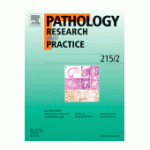Eosinophilic colitis: Case series and literature review
 INTRODUCTION:
INTRODUCTION:
Primary eosinophilic colitis (EC) in adults is a rare and poorly studied disease, with 3 case series, 2 database-based studies and 52 case reports published to date.
METHODS:
Retrospective study of all adult EC cases diagnosed in a large tertiary hospital (Hospital Clínico San Carlos, Madrid) between 2006 and 2016. We included all cases with a histopathological diagnosis of EC and we selected only those cases that were clinically recognized primary EC. We report their clinical, endoscopic and histopathological features and review the literature on this topic.
RESULTS:
We identified 22 primary EC cases. Patients were mostly women (77%) with a mean age of 41 years. 4 patients (18%) had coexistent allergic diseases. Most patients consulted with diarrhea (86%) and 3 patients also suffered from rectal bleeding. Blood tests showed peripheral eosinophilia in 4 cases (18%). 19 patients had no endoscopic lesions, 2 had features of unspecific colitis and one showed features suggestive of IBD. Mean and maximum number of eosinophils per high power field ranged from 16 to 199 and 20 to 253 (mean: 48 and 70). They were mainly located in the lamina propria and most cases were associated with signs of eosinophil activation. Most patients were treated by corticosteroids, diet or budesonide and the result of treatment was generally good. No complications or recurrences were reported.
CONCLUSIONS:
EC etiology and pathogenesis is unknown. Its clinical, endoscopical and imaging features are not specific, and clear histopathological criteria are lacking. Identification of signs of eosinophilic activation could be helpful.
Pathology — Research and Practice, Volume 214, Issue 1, January 2018, Pages 100−104
doi: 10.1016/j.prp.2017.09.029
